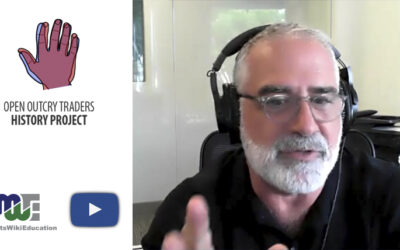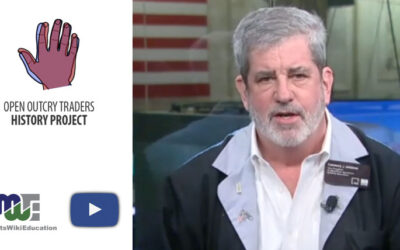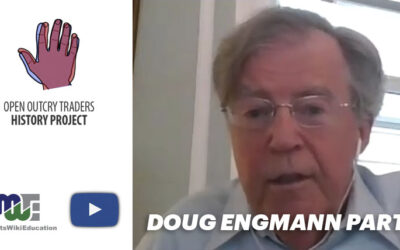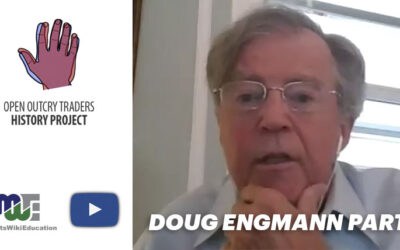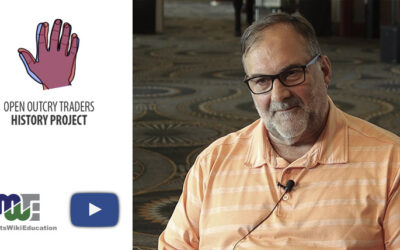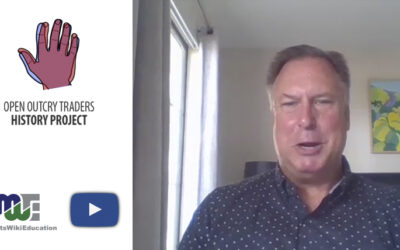When he was young, Kenny Polcari wanted to be in politics – preferably to eventually be president of the United States. But, he said, “Thank God none of that came true.”
When he was 19, he interned on the floor of the New York Stock Exchange. He knew nothing about the business and was from Boston rather than New York. At first he thought, “Who wants to move to New York City in the summer as a 19 year old kid?” He was going to go back to Cape Cod and be a lifeguard. But he thought about it and did his homework and said, “What’s the worst that can happen?”
That decision to intern at the NYSE changed the course of his life, he said. He fell “head over heels in love” with the NYSE. He worked there in the summer of 1981 and 1982 during the Reagan years when interest rates were at 20%, mortgage rates were at 16%, and inflation was 10%.
“On Tuesday, August 17, the greatest bull market was born when Paul Volcker said the Fed would cut interest rates by 10%, which was two percentage points,” he said. “There was a massive exodus. The phones never stopped ringing.”
He found it all incredibly exciting. He had been planning to go back and finish college in Boston, but his boss didn’t want him to leave and suggested he transfer to a school in New York.
“But I never would have been able to work at the exchange all day and go to school at night,” Polcari said.
His boss understood and offered to give him a job nine months out, when he finished school, paying $36,000 a year, which was a lot at the time. So he went back to college and had the greatest year of his life knowing that he would have that job upon graduation.
Instead of moving back to Boston, he stayed in New York and met his future wife at the NYSE, where she was a member when there were only a handful of female members.
By 1985, business was booming. Polcari said his biggest regret was never having bought a seat at the exchange.
“But you had to pay cash for a seat,” he said. “I was 24 years old in 1985 and I didn’t have $350,000. I had just bought a house and we had just had a baby. But I could afford to lease a seat at five grand every month. I leased a seat my whole career.”
He brought people into the NYSE, too – people he’d gone to school with who he thought would be successful, and later he started to mentor people.
“You had to be a type A personality,” he said.
The great thing about his wife being an exchange member too was that they understood the stresses on each other, he said. They could go home at night and talk about it.
Asked what he would change about his career, he said, “I probably would have taken my CFA exam.” He took his Series 7 in 1983 and debated taking a CFA exam but felt he would be exhausted trying to trade all day and study for the exam at night.
But the world changed and technology came around, and the job he used to do no longer exists.
He lost interest in the business when the open outcry pits went away in 2005-2006.
“My job got eliminated, and I fought like hell because I thought it was the greatest place in the world. But ultimately, I wasn’t Goldman Sachs or JP Morgan. They have millions to spend on technology and the little guy got squeezed out,” Polcari said.
He said he believes the state of the markets today is largely a result of what happened on September 11, 2001. “Up until that we were using technology to create efficiency. The conversation wasn’t about stability. Then 9-11 happened and the whole country woke up and said we should be using tech to create security and stability.”
During the beginning of the Covid pandemic, the NYSE actually shut down for eight weeks, he said, “but you wouldn’t know because the markets continued to function, since it all traded in the cloud.”
He said he hung on until it was no fun anymore, and then he moved to Florida and launched a financial consulting business.
His best memories centered around the personalities he knew at the exchange, Polcari said. He made great friends there; he could be fighting with someone all day long on the floor, he said, “but then the bell rings and we’d go have a steak at Harry’s.”
He was there during the crash of ’87 and the roaring ’90s, as well as during the dotcom crash of 2000, which “all happened at Nasdaq,” he said. “So I never traded those stocks.”
His worst memory of the floor was when he lost $1.5 million on one trade. “I wasn’t even there that day, I was on vacation,” he said. “My partner was there, and right on the opening [the trade was] completely screwed up. I was on my way to Long Island and he called me up in a near panic. I dropped everything and tried to figure out what happened. It was a very expensive lesson.”






